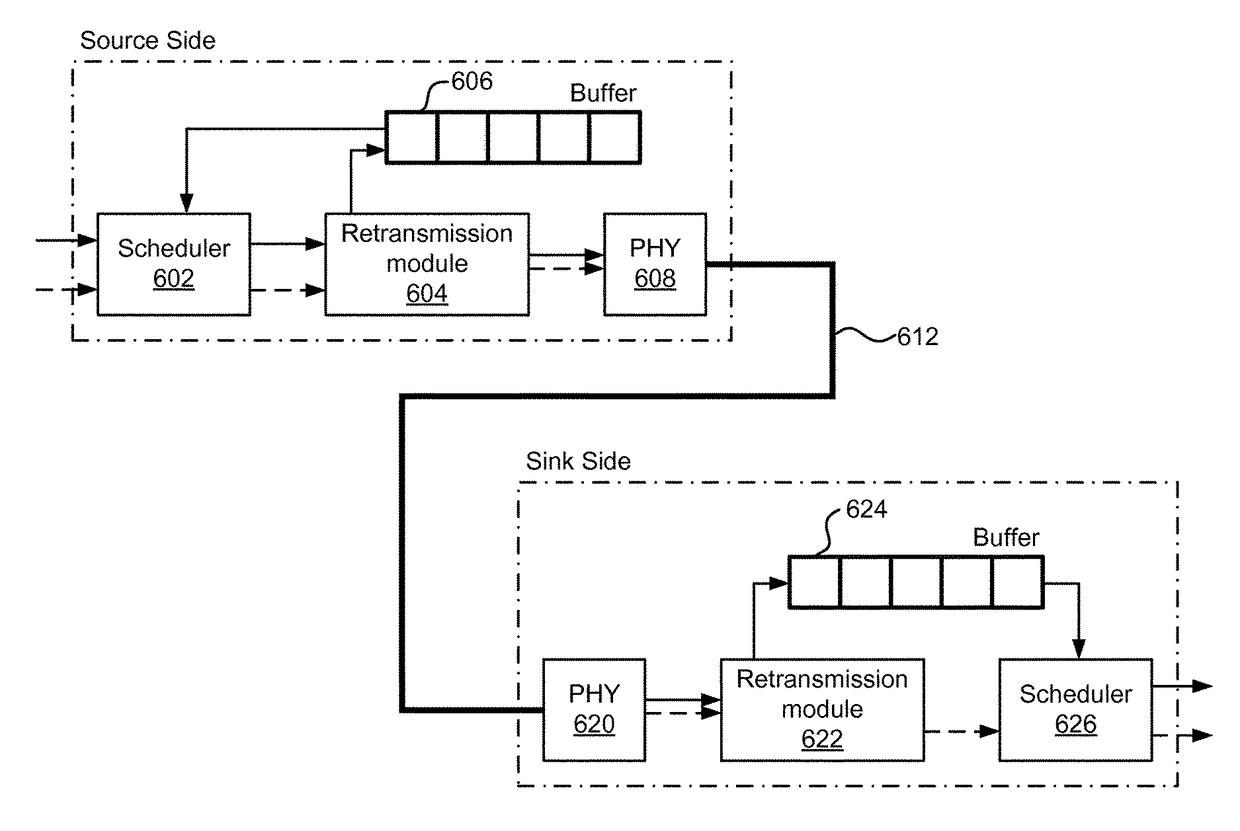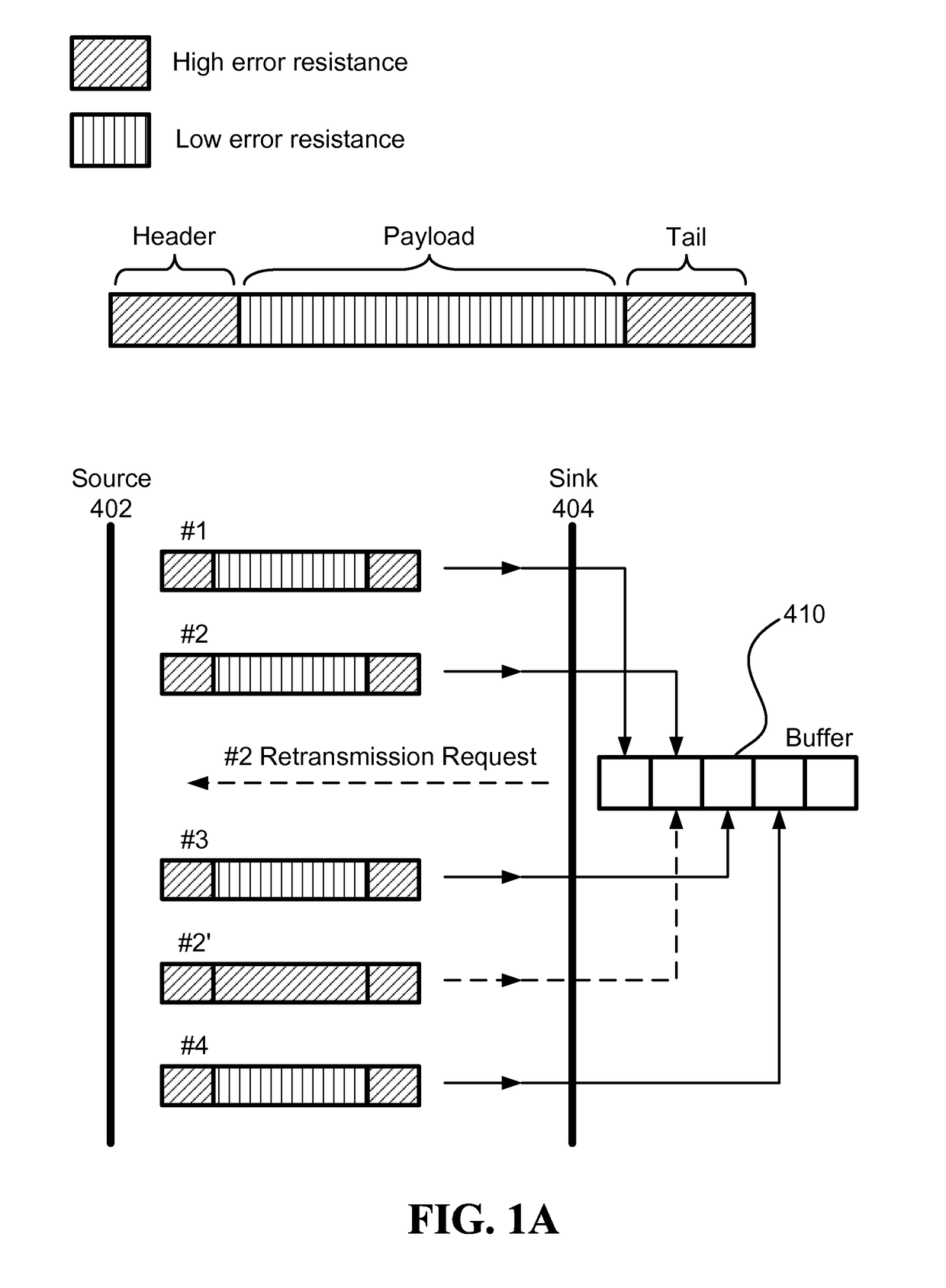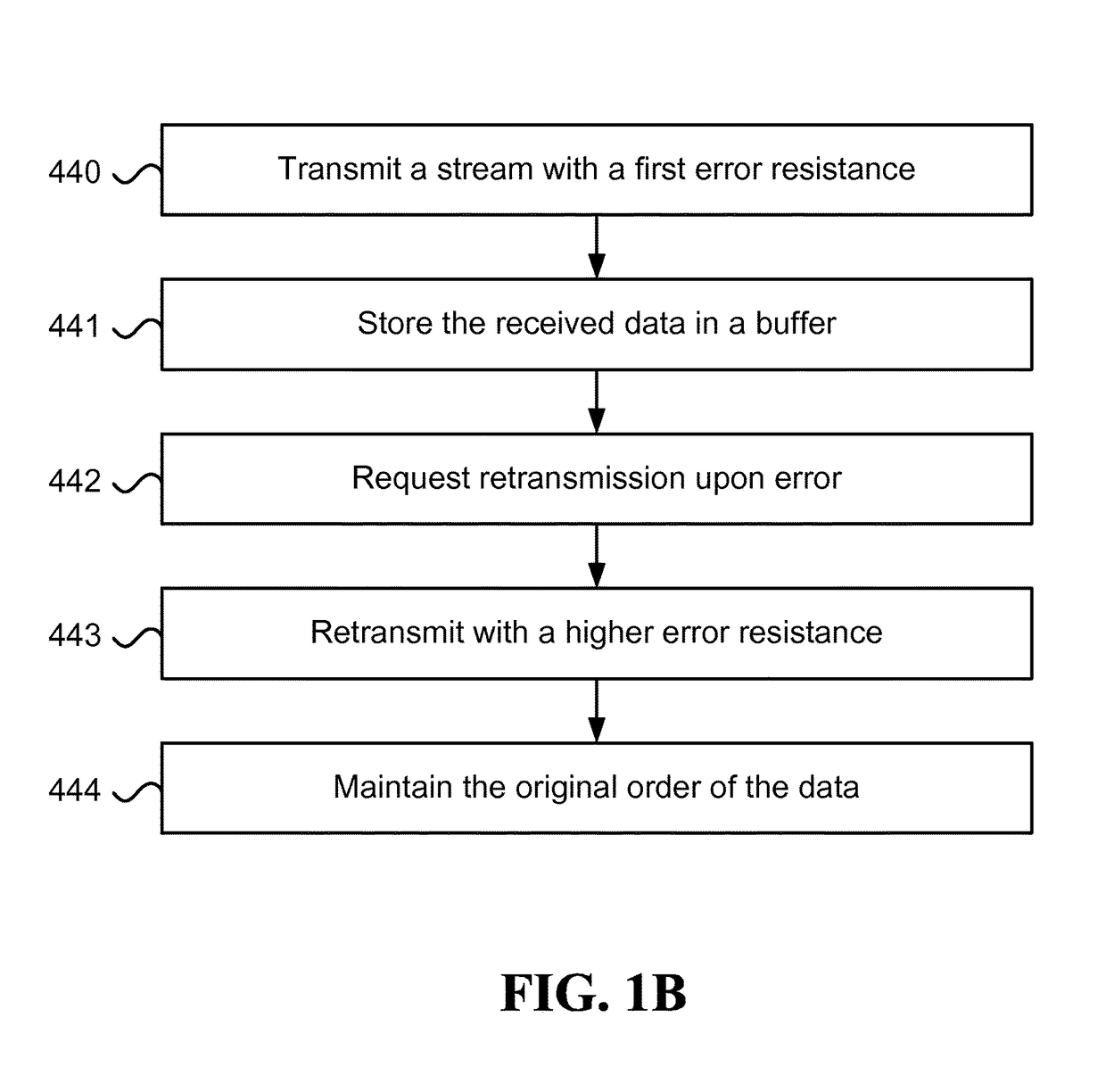Highly utilized communication channel with order and retransmissions
a communication channel and high-use technology, applied in the field of communication systems, can solve the problems of unnecessary waste of bandwidth, delay in data communication, and techniques that do not utilize the communication link to its maximum capacity, and achieve the maximum capacity reduce the latency of the communication link, and increase the error resistance level
- Summary
- Abstract
- Description
- Claims
- Application Information
AI Technical Summary
Benefits of technology
Problems solved by technology
Method used
Image
Examples
Embodiment Construction
[0016]In the following description, numerous specific details are set forth. However, the embodiments of the invention may be practiced without some of these specific details. In other instances, well-known hardware, software, materials, structures and techniques have not been shown in detail in order not to obscure the understanding of this description. In this description, references to “one embodiment” or “an embodiment” mean that the feature being referred to may be included in at least one embodiment of the invention. Moreover, separate references to “one embodiment” in this description do not necessarily refer to the same embodiment. Illustrated embodiments are not mutually exclusive, unless so stated and except as will be readily apparent to those of ordinary skill in the art. Thus, the invention may include any variety of combinations and / or integrations of the embodiments described herein. Also herein, flow diagrams illustrate non-limiting embodiment examples of the methods...
PUM
 Login to View More
Login to View More Abstract
Description
Claims
Application Information
 Login to View More
Login to View More - R&D
- Intellectual Property
- Life Sciences
- Materials
- Tech Scout
- Unparalleled Data Quality
- Higher Quality Content
- 60% Fewer Hallucinations
Browse by: Latest US Patents, China's latest patents, Technical Efficacy Thesaurus, Application Domain, Technology Topic, Popular Technical Reports.
© 2025 PatSnap. All rights reserved.Legal|Privacy policy|Modern Slavery Act Transparency Statement|Sitemap|About US| Contact US: help@patsnap.com



